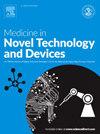异种脱细胞材料用于骨软骨整体修复
Q3 Medicine
引用次数: 0
摘要
骨软骨缺损的修复仍然是一个临床障碍,主要归因于骨软骨组织独特的分层解剖结构和骨-软骨界面复杂的结构-功能异质性。然而,传统的骨软骨缺损修复策略存在固有的局限性。通过保留原生细胞外基质(ECM),脱细胞结构可以再现骨软骨组织的三维多孔结构和组成-力学梯度。异种骨软骨脱细胞支架由于具有良好的结构仿生性和保留原有组织的生物活性而成为缺损修复的研究热点。本文首先系统地概述了目前骨软骨脱细胞技术和关键的体外评价指标。最后总结了该支架在临床前动物模型中的体内修复效果。最后,它强调了当前研究中的关键挑战,包括材料的残余免疫原性和不匹配的降解率,并讨论了基因编辑和动态机械刺激的潜在应用。本综述旨在对异种骨软骨脱细胞支架的技术优化和临床转化提供见解,从而促进骨软骨缺损修复策略的临床实施。本文章由计算机程序翻译,如有差异,请以英文原文为准。
Xenogeneic decellularized materials for integrated osteochondral repair
Repairing osteochondral defects remains a clinical hurdle, primarily attributed to the unique hierarchical anatomical structure of osteochondral tissue and the complex structural-functional heterogeneities of the bone-cartilage interface. Conventional strategies for osteochondral defect repair, however, suffer from inherent limitations. By retaining the native extracellular matrix (ECM), decellularized constructs can recapitulate the 3D porous architecture and compositional-mechanical gradient of osteochondral tissue. Integrated xenogeneic osteochondral decellularized scaffolds have thus emerged as a research hotspot in defect repair, owing to their superior structural biomimicry and retention of native tissue bioactivity. This review first systematically outlines current osteochondral decellularization technologies and key in vitro evaluation indices. Furthermore, it summarizes the in vivo repair efficacy of such scaffolds in preclinical animal models. Ultimately, it highlights key challenges in current research, including residual immunogenicity and mismatched degradation rates of materials, and discusses the potential applications of gene editing and dynamic mechanical stimulation. This review aims to provide insights into the technological optimization and clinical translation of integrated xenogeneic osteochondral decellularized scaffolds, thereby facilitating the clinical implementation of osteochondral defect repair strategies.
求助全文
通过发布文献求助,成功后即可免费获取论文全文。
去求助
来源期刊

Medicine in Novel Technology and Devices
Medicine-Medicine (miscellaneous)
CiteScore
3.00
自引率
0.00%
发文量
74
审稿时长
64 days
 求助内容:
求助内容: 应助结果提醒方式:
应助结果提醒方式:


